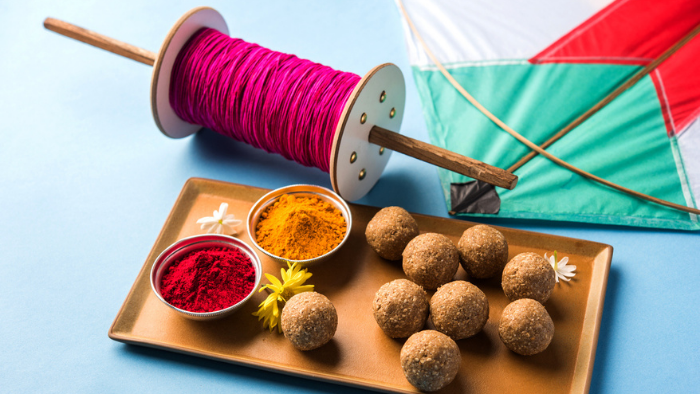A spectacle during the Uttarayan week that draws crowds from across the world is the International Festival of Kites. Uttarayan marks the northward movement of the sun, and this denotes longer days and clear skies. People celebrate this joyous transition, and one such form of revelry is flying colourful kites.
The festival is celebrated in many parts of India that include Gujarat and Rajasthan. The festivities began in the late 80’s in Gujarat and are mainly organised in the city of Ahmedabad. The history of kite-flying goes back thousands of years. There are many records that state the arrival of kites into India from the East via the silk route. However, mentions of kite flying in India dates back to the Ramayana. Tulsidas’s Ramacharitramanas describes a scene where Hanuman retrieves Shri Rama's kite.
Nikita Desai in her book A Different Freedom: Kite Flying West, writes about the tradition of kite flying in ancient India and in the Vedas. Many poets and saints have also sung about kites, for instance, the Marathi poet Namadeva, said in his poems, that kites were made from paper (kaagad).
Today, kite-flying is the most looked forward to event that occurs during Uttarayan week and on Independence Day. Throughout the Uttarayan week, craftsmen and kite flyers from various parts of the country and the world showcase their bright and creative kites.
The Patang Bazaar in Ahmedabad swarms with crowds buying the most beautifully designed kites. The bazaar is open for 24 hours that entire week. Months before the Uttarayan week, the local families and industries begin to design and manufacture these kites. The art of kite-making is a marvel considering the aerodynamic skill, colours and designs.
People stand on their rooftops and fly their kites, and this turns into a competition where one attempts to cut off another’s kite strings with the following chant- Kai Po Che, meaning I cut the kite. Gujarat also houses the Patang Kite Museum, designed by Bhanu Shah. It houses various historical kites, with a total of thirty-three panels in the museum.
It was in the year 1989 that the International Festival of Kite began, and the festival saw hundreds of tourists from across the world coming in to participate in the festival. The festival sees tourists from more than thirty-five countries and these include Japan, the USA, Russia, Lithuania, Malaysia, China, Indonesia and more.
Better India collected responses from various kite-flying enthusiasts, from other nationalities, a few years back. The festival then saw participants from Argentina, Germany, Korea, Italy, Spain, Singapore, and more, with more than two hundred participants. Every participant had an overwhelming experience and heartwarming comments on India and its culture. Some expressed that they had not come across a grand kite festival anywhere else in the world and were lucky enough to participate in India. Some expressed their love for Indian food, its weather, the traditional clothes, and the welcoming nature of Indians.
The festivities also include pujas, aarti and some mouthwatering delicacies like Jamun, til laddoos, and Undhiyu, a traditional Gujarati dish that is prepared mostly during winter.
Similar to the kite festival in Gujarat, Jaipur also organises their own festival, during the Uttarayan week, to welcome the bright sunlight and clear blue skies. Along with kite-flying, Rajasthan’s beautiful culture is showcased and this includes folk music and dance performances, puppet shows, and a range of local delicacies- such as pheeni, dal pakori, til ladoo and others. The kite festival in India is a cultural and gastronomic adventure to those travelling to India.
In the past few years, Kerala and Jammu & Kashmir have also begun to organise the kite festivals in their respective states.
The kite festival boosts the economy because apart from its cultural significance, the festival provides employment opportunities to many. It also helps local artisans. Apart from this, word about the festival is spread far and wide, bringing in more and more tourists, thereby promoting tourism.
This year, due to the pandemic, the festival has been cancelled. Kite makers, local artisans, and foreign travellers hope that the festival will be conducted the following year. The sight of colourful kites against the bright blue sky is definitely a spectacle that no one wants to miss.




